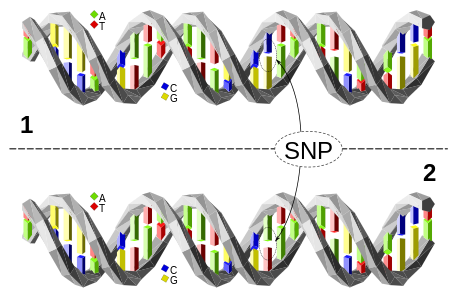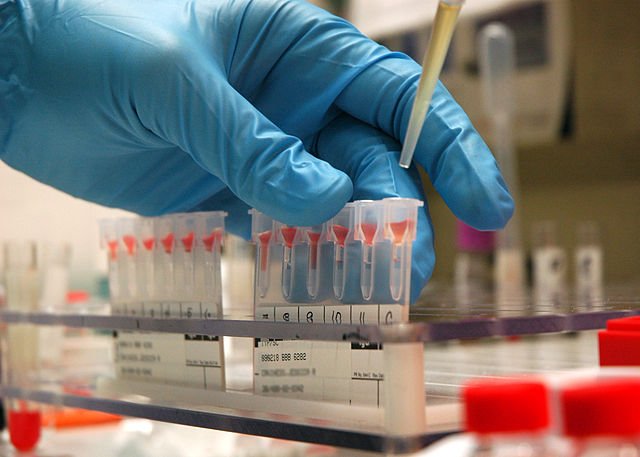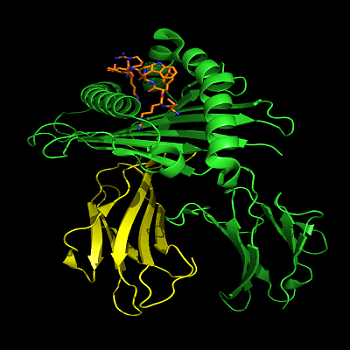Application of science in settling paternity/maternity disputes

We live in twenty-first century where promiscuity and infidelity are often considered as sexual emancipation. Even in African communities where religion is a big deal and marriage institution is quite strong, one can actually get laid at virtually no cost except maybe some sexually transmitted infections and uninvited babies. Consequently, a lot of disputes occur everyday pertaining to the paternity of babies. The term 'bastard' is often used for babies or children whose paternity is in question. Little wonder calling someone a bastard as a form of abuse can lead to a major brawl, especially in the African communities here.
In this modern times, settling paternity (or sometimes, maternity) disputes actually goes beyond traditional methods of mediating between the parties involved, unlike what is obtainable in the olden days within the African communities. In those days, paternity/maternity disputes are settled via unscientific means which I like to refer to as spiritual/magical/diabolical means. In the yoruba communities in Southwestern Nigeria, the subjects involved in the dispute are usually taken before an 'ifa priest' who will seek the divine guidance of the gods in order to tell who is who.
As modernization and technology penetrate within the various communities, varieties of methods have been developed in order to know the actual father/mother of a child in case of disputes. Scientifically, there are two methods available in the laboratory to determine the paternity of a child or a baby. These are;
- Blood testing which involves blood antigens/serum reactions, and
- DNA testing which seems to be more popular in our societies.
Blood testing
The blood test works on the principle that the red blood cell antigens are inherited as a dominant trait from either of the parents. Basically, the antigens are protein based molecules that usually combine with sugars and occupy the membrane of the red blood cells. A human with blood type A possesses A antigens, the one with B blood type possesses B antigens while the one with AB blood type possesses both A and B antigens. In addition, some humans possess none of A or B antigens in their bloods, such blood types are called O blood.

This kind of blood system is inherited in such a way that a mother with type B blood and a father with type B blood could not have parented a child with AB blood. This reminds me of how a laboratory scientist within my locality almost ended a 30 years old marriage with her stupid mistake. It happened that the father to the boy that went for a blood group test is A blood and knowing that the mother is also A blood, hell was almost let lose when the boy got home with a result of AB blood type from the laboratory. It took the intervention of another laboratory which performed another test and confirmed that the boy is actually A blood before the marriage could be rescued. If the boy had truly been AB blood, it only amounts to one thing; the man did not fathered the boy.
A particular downside to using red blood cell antigen systems for paternity testing is that it is not totally reliable because the frequencies of the genes that coded for the antigens are quite high.
A version of the paternity blood testing was developed in the 70s which makes use of the white blood cell's antigens or human leukocyte's antigens instead of the red blood cells antigens. This particular test seems more powerful and with it, about ninety-five percent of falsely accused fathers were able to be excluded. The test requires that several milliliters of blood sample be taken from the subject's arm veins. The primary aim of the test is to identify which human leukocyte antigen genes and antigens a person has inherited and compare it with those of the parents in the case of paternity/maternity disputes. The human leukocyte antigens genes of the mother, child, and alleged father is compared and when the antigen of the child does not match that of the mother or the alleged father, then such man is ruled out as the father of the child in question.
Although the human leukocyte antigen typing was developed primarily to determine compatibility during medical cases involving organ transplants, the method has been successfully used to determine parentage.
DNA testing
The deoxyribonucleic acid stores genetic information in all living organisms, except in some ribonucleic acid viruses. A child usually inherits genetic information in form of DNA, half of which comes from the mother and the remaining half from the father. individual's deoxyribonucleic acid is unique in a lot of ways, except in cases of identical multiple births.
 source: [pixabay cc0](https://pixabay.com/en/dna-double-helix-model-minor-groove-694798/)
source: [pixabay cc0](https://pixabay.com/en/dna-double-helix-model-minor-groove-694798/)The DNA testing works by comparing the genetic characteristics of the child in dispute to those of the biological mother or father as the case may be. It is the most accurate method of all the methods of determining a child's paternity. Basically, it requires profiling of the DNA of those involved and then comparing to see if one is the derivative of the other. If the test involves paternity determination of a male child, the Y chromosomes of the father and the child can be compared, since it is usually inherited directly by the male child from the father.
Conducting DNA tests requires blood collection and using restriction fragment length polymorphism method or using the buccal scrap procedures during which buccal cells found in the inside of the cheek is collected by rubbing it with a buccal swab or cheek swab and then analyzing it using polymerase chain reaction.
Summary
The promiscuity of man that comes with modernization has led to proliferation of children with disputable parentage, although not all paternity/maternity disputes are as a result of promiscuity. In the traditional African society, there use to be a local way of settling these disputes through consultation with local gods. A host of methods are available in modern science. These include blood testing and DNA analysis. While the blood testing is based on the serum/antigen reactions, the DNA analysis is based on matching of genes of subjects on a probe. The DNA analysis provides results of high accuracy compared to the blood testing.
Thank you for reading.


Being A SteemStem Member
Wouldn't it be easier and faster to just sequence know polymorphisms (common DNA changes in the population) or use PCR to detect microsatellite (eg. short terminal repeats) DNA than do restriction fragment polymorphisms using DNA probes?
Congratulations @hadji! You have completed some achievement on Steemit and have been rewarded with new badge(s) :
Click on any badge to view your own Board of Honor on SteemitBoard.
For more information about SteemitBoard, click here
If you no longer want to receive notifications, reply to this comment with the word
STOP